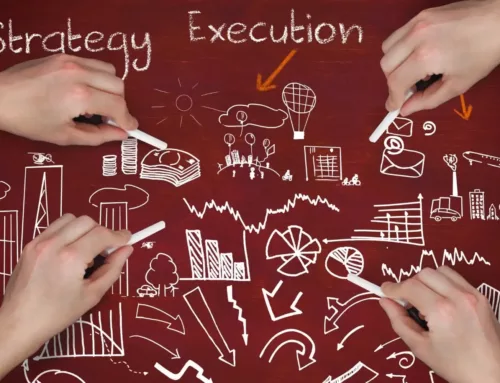To manage goals for results, you need reliable and timely performance data. Each goal must be linked to one or more timely performance measures (KPIs) to indicate your current position / progress toward achieving the goal’s result target.
The process of selecting (or newly developing) performance measures (KPIs) is covered in other blog posts ‘Selecting & Developing Performance Measures’. In this post, we will focus on the process of selecting (or newly developing) the goals themselves.
Clear Goal Development: The 42% Problem . . . Solved
A recent *study revealed 42% of workers across every gender, department, and age group say having unclear goals is their top source of stress. If you are developing your goal(s) from scratch, vs. selecting ready-to-use model goals from The Next Level Unified Goals Library, you need to be fully aware of this problem, and avoid falling victim to it when developing your own goals. This article details step one of four which focuses on developing clear goal descriptions.
1.1 Assess the Quality of Goal Descriptions
Choosing relevant and useful performance measures (KPIs) starts with Goal descriptions that people can understand and agree on (clear goals). Therefore, the Goals development process begins by reviewing candidate Goals to make sure that each Goal description is of good/acceptable clarity to your team. If not, play ‘catch ball’ and edit the text accordingly until you have buy-in.
The Next Level Systems – Worksheet 3: Goal Description Assessment* – can help you determine if your Goal descriptions are:
- Measurable and objectively verifiable
- Meaningful and realistic
- Focused on the organization’s strategic commitments
- Can be materially affected by the Goals Framework Team and its partners (it is within the team’s manageable interest)
- Statement of results – not an activity, process or output
- Uni-dimensional – not a combination of results
CONSIDER THIS – Rules of Thumb for Goal Description Review: Keep in mind when reviewing Goal descriptions:
- Avoid overly broad statements. Emphasize specific language that can be interpreted down to the Individual Performance Goal level creating direct line of sight relevance to the tasks and initiatives of individual employees.
- State results as future completed actions. The description statement should describe the end state (the Result) that is desired as the product of the activity.
- Use strong action verbs. This makes results easier to define. Examples of strong action verbs are: construct, eradicate, or reduce. Examples of weak action verbs are: enhanced, liaised, or coordinated.
- Be clear about what type of change is implied. What is expected to change — a situation, a condition, the level of knowledge, an attitude, or a behavior? Is the expected change an absolute change, relative change, or no change?
- Identify more precisely the specific targets for change. Who or what are the specific targets for the change? Is change expected to occur among individuals, groups, communities, regions?
- Study the activities and strategies directed at achieving change. Is the expected relationship between activities and their intended results direct or indirect?
Are You Part of the 42% Problem or the Solution?
The Next Level – Unified Goals Library – contains model goals (OKRs) and measures (KPIs) used by top performers. Each goal is standardized, described, and cross references related functional areas allowing managers and teams to collaborate and ‘unify’ their goal setting.
Charles Collins is Chief Business Goals Architect at The Next Level Systems – a KPI Fire Partner.
Contact Charles: Charles.Collins@54.201.12.32
Contact Charles for a free 15-minute, no-obligation review to benchmark one of your key goals against the Goals Library. And receive a free copy of *Worksheet 3: Goal Description Assessment in MS Word format for editing.







